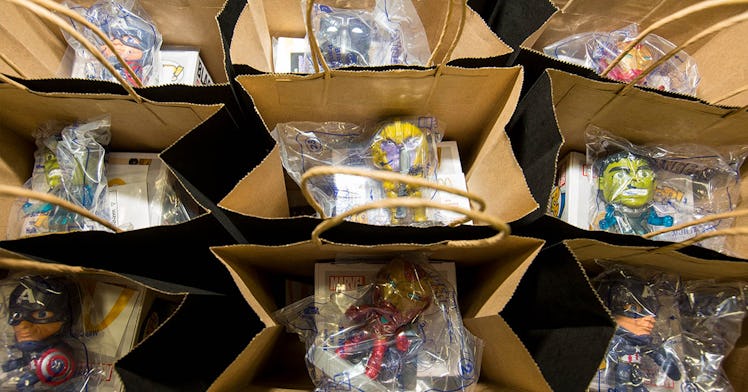McDonald’s Will Finally Ditch Plastic Toys — But There’s a Catch
McDonald's will finally get rid of the plastic toys... and replace them with something cooler.

For as long as many can remember, the highlight of getting a Happy Meal at McDonald’s includes the plastic toy that comes with it — usually centered around a new movie release or a popular item of kid’s media. But now, the Happy Meal is about to change in a major way, and that way is that McDonald’s recently announced its plan to drastically reduce its use of single plastics by removing them from its popular Happy Meal promotions. But that doesn’t mean the toys are going away!
According to Axios, McDonald’s has announced its plans to phase out the plastic toys in its Happy Meals. Not just in the United States but worldwide, the company has set a goalpost of having that transition completed by the end of 2025.
“Protecting the planet for our shared future demands that we look at all parts of our business, including the customer experience,” Jenny McColloch, the company’s chief sustainability officer, said in a statement.
“Together, we’re expanding our positive impact on the environment through the transformation of one of McDonald’s most beloved icons,” McColloch continued.
The company didn’t reveal how many Happy Meals toys are sold daily or per year. Still, it did say the new initiative will reduce its use of plastics in the kids’ meals annually by 90 percent compared to 2018.
McDonald’s is looking into making things from bio-based, recycled, or plant-derived materials in place of plastic toys. In the UK, Ireland, and France, McDonald’s is already offering paper-based toys, books, and soft toys in place of plastic toys.
According to Natural Resources Defense Council, companies and corporations using single-use plastics make up most of the plastic pollution problem. Previously, McDonald’s banned single-use plastic straws in its restaurants in the UK and Ireland and swapped for paper-based ones.
“We produce 300 million tons of plastic each year worldwide, half of which is for single-use items,” Natural Resources Defense Council writes. “That’s nearly equivalent to the weight of the entire human population.” Reducing the use of single-use plastic is one of the best ways we can reduce its negative footprint on the environment.
This article was originally published on